Interview The Kanto team
Images Archetype Architecture
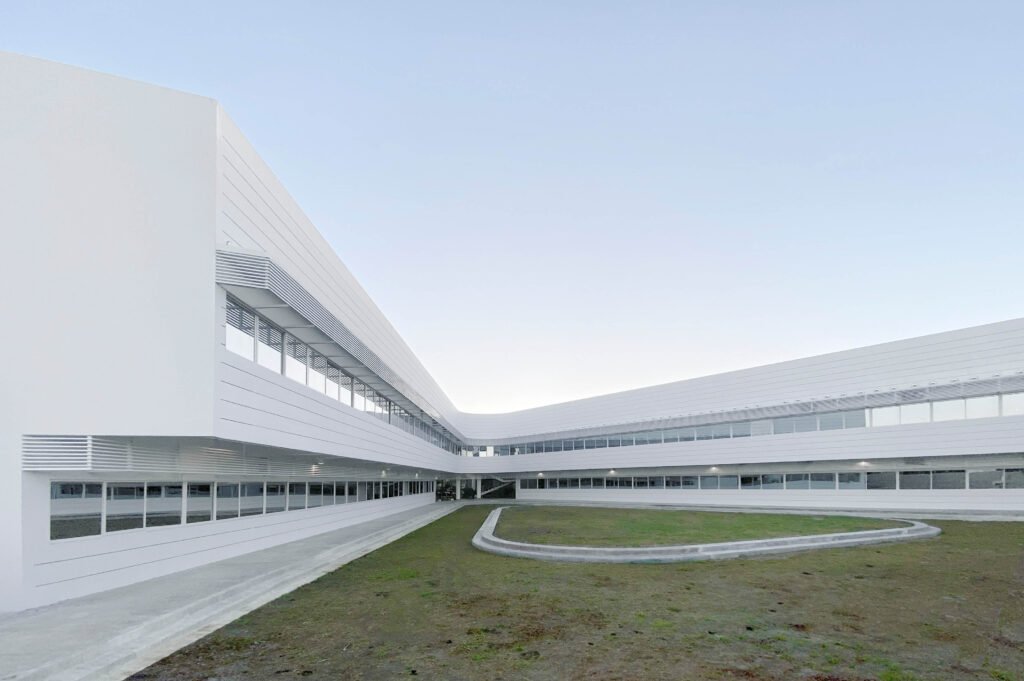

Hello, Archetype Architecture! Welcome to Kanto! Can you share with us how you secured the prized commission for the St. John’s Institute Center for Academic Excellence – West Wing? Can you also elaborate a bit on the client brief?
Adriel Lim, principal architect of Archetype Architecture: Hello Kanto! Thanks for having us! In 2017, I had just completed my architect licensure exams when the Board of Trustees at St. John’s Institute began searching for designs for their new campus at North Point Estate in Talisay City. As a former student of the school, I took the opportunity to contribute my design ideas for the campus expansion. Having studied at St. John’s Institute from kindergarten to high school, I believe that I had an advantage and a deeper understanding of what it means to be a Johnian.
St. John’s Institute: We are a 55-year-old Filipino-Chinese Catholic educational institution located in Bacolod City. We have commissioned Archetype Architecture, led by alumni Adriel Lim, to design a new campus masterplan for a 5-hectare plot located in the burgeoning, fully integrated community of North Point Estate in Talisay. The new campus is envisioned to have state-of-the-art educational facilities in tune with the original campus in Bacolod City.
The new St. John’s Institute Antonio and Irene Uy – West Wing Building is part of a complex of connected structures that are being built in phases. The West Wing, and the St. John’s Institute Luis T. Ong Sports Pavilion, completed in October 2019, comprise the first phase. The new West Wing building has classrooms, faculty rooms, ICT centers, robotics laboratories, a science laboratory, a cafeteria, a clinic, administrative offices, and a library totaling 5,200 square meters of floor area. It houses the elementary facilities of the campus. The next construction phase will comprise the planned East Wing Building, which will house high school facilities, a theater, and a central assembly building. This will complete the campus master plan.
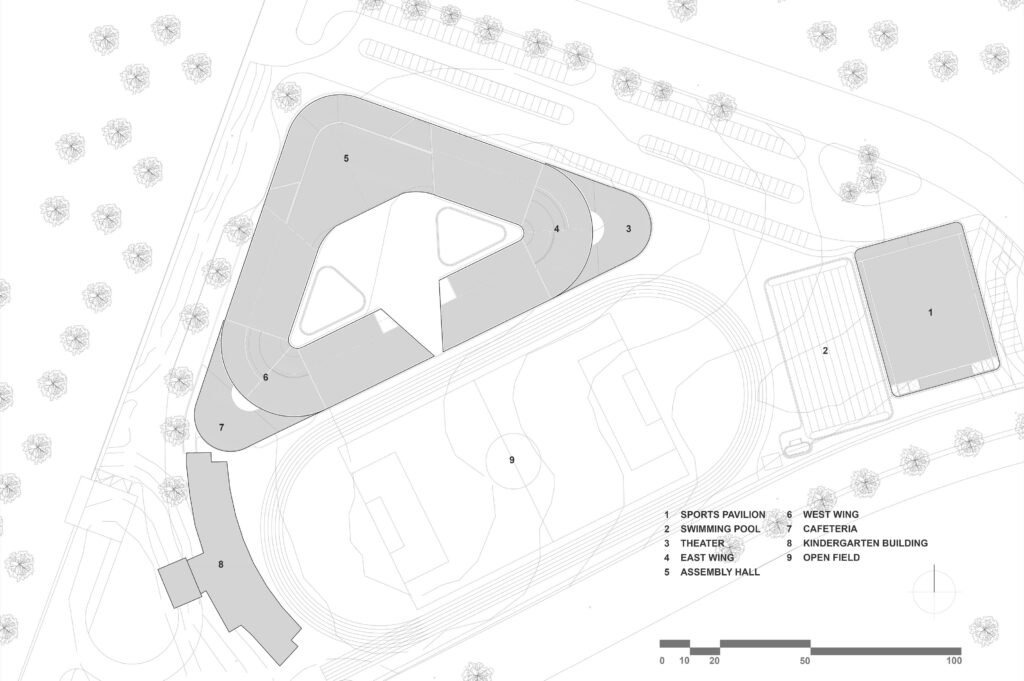


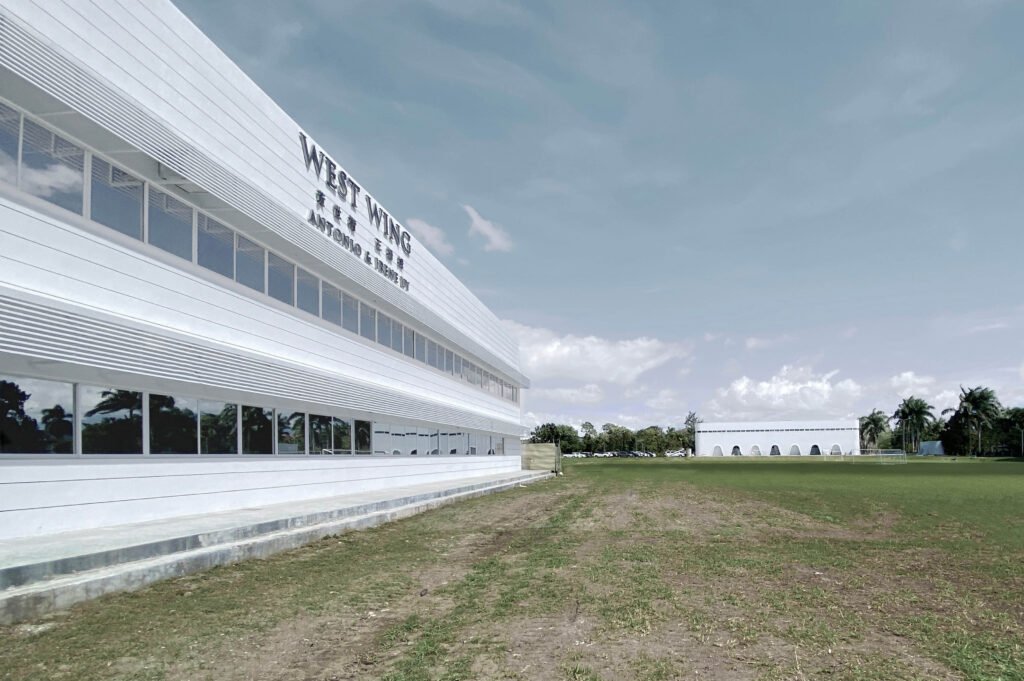
How were the building’s various programs organized within the 4,000 sqm project area? What needs and wants did you draw out from the facility’s prospective users?
Lim: The building is designed as a streamlined structure that expands spatially on two arch-shaped plans. It surrounds a large central courtyard, which is the focal point for all the educational facilities. This courtyard provides a space for students to gather and engage in scholastic endeavors and recreational activities. The courtyard’s perimeter is lined with steps inviting students to sit and socialize.
The project’s total floor area, including the upcoming East Wing and Assembly Building, is over 10,000 square meters. The classrooms, laboratories, and administrative facilities are arranged in a continuous loop around the central courtyard, following the building’s overarching, linear shape. The hallways in between the facilities make use of natural ventilation through vents.
Let’s talk about the building’s form. In what ways does the rounded V-shape, two-story volume contribute to the functionality and aesthetics of the facility? What is Archetype Architecture’s design vision for the project?
Lim: The architecture is evocative of an institution that has been at the forefront of educational innovation in Negros, while staying true to its Catholic values. I imagine it as a modern and dynamic experience that focuses on simplicity and fluidity, aiming to inspire a new perspective on the future and stimulate creativity for those who enter its spaces. The aforementioned fluidity and simplicity emphasizes the legibility and accessibility of the project’s diverse programming. It allows the educators, students, and visitors to draw out the most of the spaces’ potential.
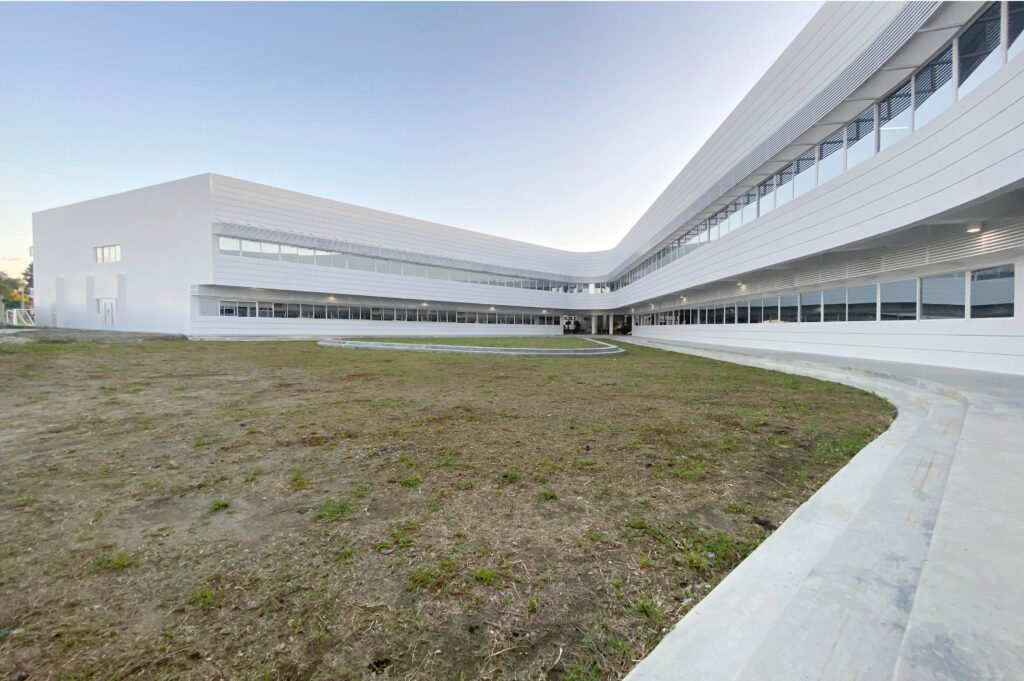

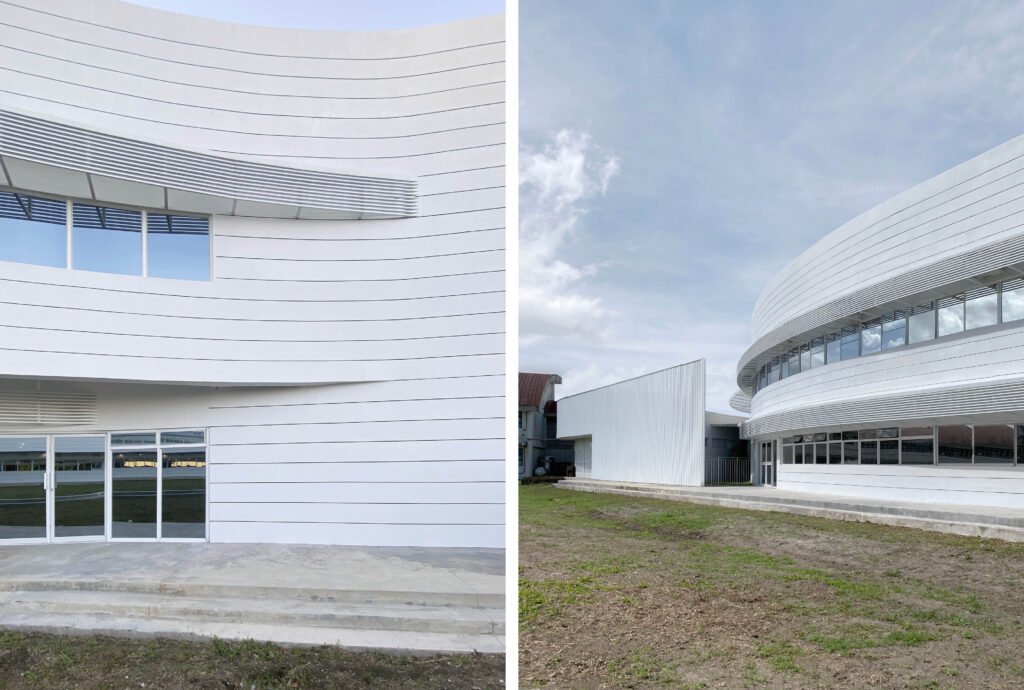

Regarding the material palette, can you explain the significance of the all-white exterior and interiors and the use of concrete flooring in achieving the desired architectural expression? Was the client immediately on board with the color choice?
Lim: The primary intention behind using an all-white color scheme for the school’s design is to reflect its religious values. White is associated with purity and divinity, which are symbolic themes that the color white represents. Therefore, the use of white accentuates the literal aspects of the building, bringing together all its elements in the pursuit of figurative purity.
The use of concrete in buildings is often associated with practicality and functionality. However, I believe that there is also inherent beauty in the utilitarian nature of concrete – its authenticity as a material of the modern era that is readily available and affordable. Concrete is not just a surface to be walked on but also a sturdy foundation that elevates the building, much like a temple on a stone pedestal. There is a sense of reverence in constructing a building on man-made stone that honors the structure it supports.
The school’s board of trustees was receptive to these design choices. I think that if one endeavors to create a building that embodies the right values and aligns with society’s ideals, everyone can be in agreement.
What informed the placement and design of the slender ribbon of windows with overhangs? The building appears to be an inward-looking structure without large windows.
Lim: The ribbon windows and canopies are a significant part of the building’s architecture. They emphasize the building’s linearity, while their length makes up for the same area that would have been taken up by stout openings. To achieve seamlessness, the perimeter wall of the building was positioned offset from its columns, ensuring no perimeter columns would break up the lines.
The canopies serve a dual purpose – they enhance the building’s aesthetics and provide a solution to readily integrate air-conditioning units. The usage of window-type units was a particular challenge that the budget defined, but it was overcome with a simple, unobtrusive design solution
Given the relatively tight budget, Archetype Architecture had to find ways to achieve this vision of a light and pristine structure by manipulating simple architectural elements such as fenestrations and protrusions, resulting in what we believe to be an efficient but also visually striking building.
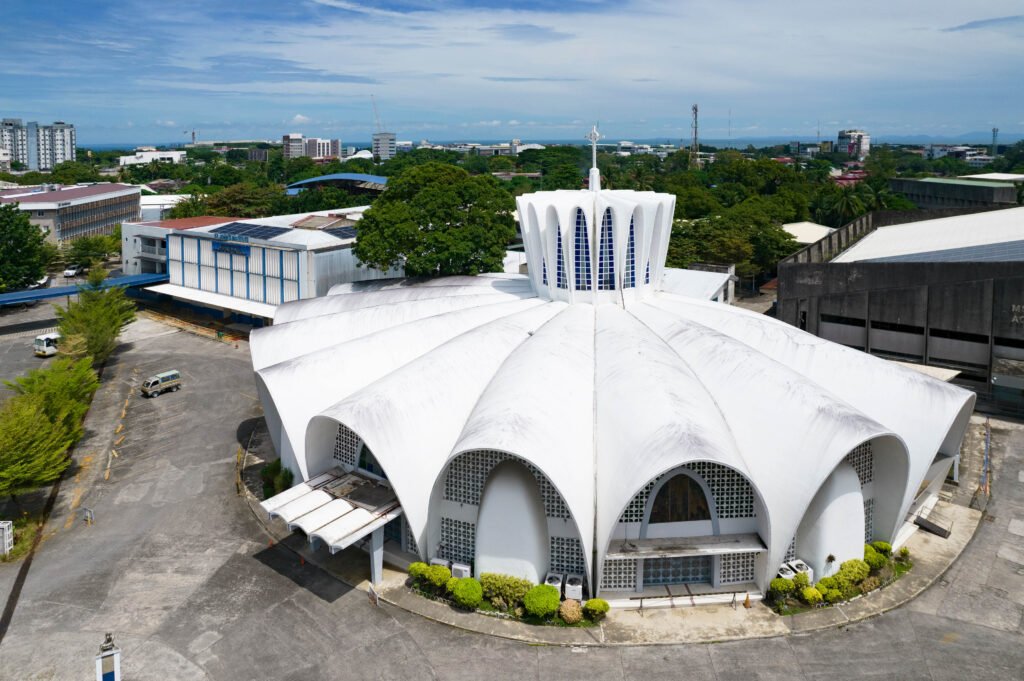

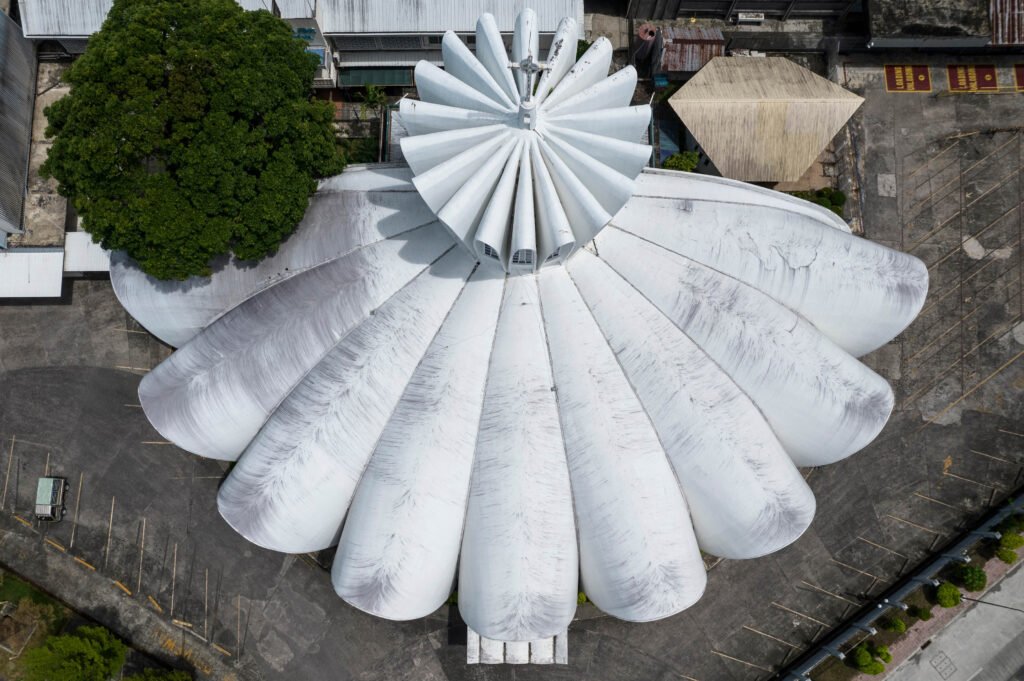

How does the architectural vernacular align with or diverge from the surrounding context of Talisay City, Negros Occidental? How does the structure relate to the existing facilities of the campus?
Lim: Our approach to this project involves new construction and reconstruction. In other words, we had to consider the heritage of the institution and its preexisting meanings, symbolisms, and representations. Our new building is an addition to an existing institution, much like a new verse in a continuing poem.
One of the most recognizable symbols of the institution is the original Queen of Peace Church, located on the original campus in Bacolod City. This church is an architectural landmark in its own right, and its arches have become iconic to the St. John’s Institute community since the establishment of the institution in the 1960s. In creating the new campus, our goal was to create something new while still preserving the familiar. We wanted to build on the existing culture rather than break from it.
You also designed the school’s sports pavilion, which carries a more regimented design but shares a curved V shape motif, this time as portals. How does the new building converse with the plan’s initial occupant?
Lim: The Sports Pavilion was the first project of the new campus master plan in Talisay City. This building is the figurative foundation from which future campus buildings are grounded.
My aspiration for this building is that it represents the essence of St. John’s School. It was designed as a temple with a colonnade, not of columns, but of arches. These arches are a reinterpretation of the Johnian arch symbol and a respectful re-imagination of what was established for a new time and place.
The succeeding buildings will derive from the arch theme that has been set by this structure, like a song with its leitmotifs that guide the direction of the design language. You can see this theme developed further in the West Wing on a grander scale.


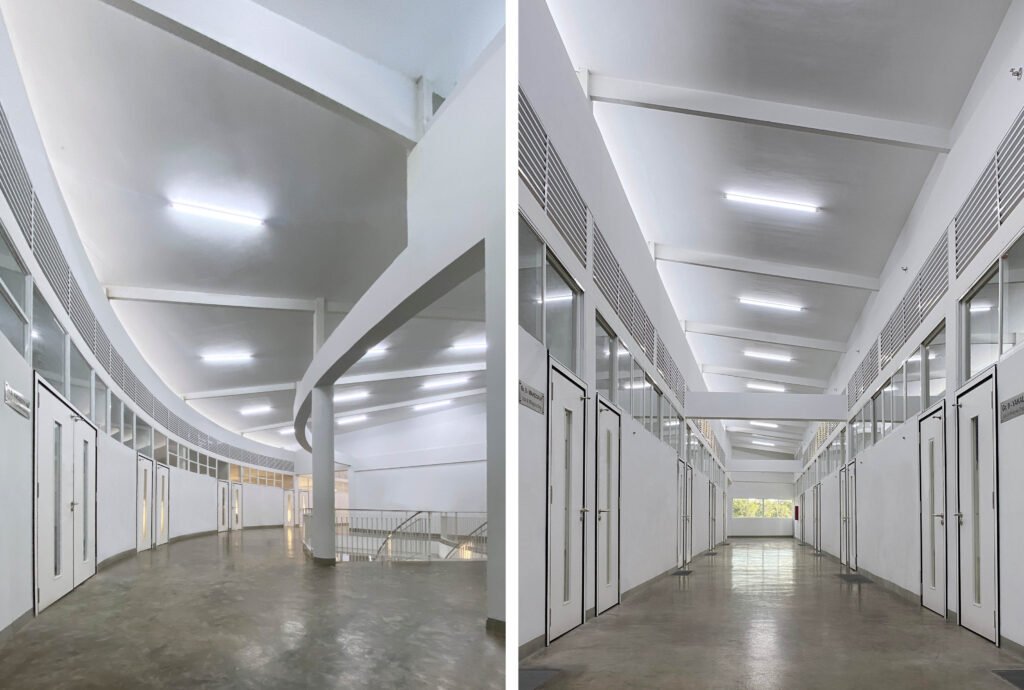

A question you probably saw coming! Can you share Archetype Architecture’s approach to practicalities and maintenance in the design of the academic building? Especially with its copious white surfaces?
Lim: White is a tricky color to work with. Despite its simplicity, it requires the right tone and hue to make all the building elements work together. White comes in many variations, and getting the right one that absorbs and reflects light correctly is essential. A part of the building is covered in steel, which is the same material used in the cladding of the Sports Pavilion. The steel comes in an off-white color matched with the West Wing’s concrete elements. Despite the challenges, white is worth the effort in design. However, it can be harder to maintain, especially in this country’s climate. But, in design, you have to give some to earn some. If it’s worth it, history will remember you well. The hope is that people will realize that beautiful things are worth preserving and caring for.
In what ways does Archetype Architecture’s quest to create emotive spaces manifest in the St. John’s Institute Center for Academic Excellence West Wing? Are the spaces designed to host artistic works or installations to animate the space, which is why monochrome shades are chosen?
Lim: The choice of monochromatic color naturally brings to mind art galleries and exhibition spaces. We can think of the students and their academic activities as the art being displayed in real-time as the building is used. The white color will serve as a backdrop to the activities of the building’s occupants, like a blank canvas for the various movements of life that occur within it. We are excited to see how the space will evolve as students use it and adapt it to their imaginations.
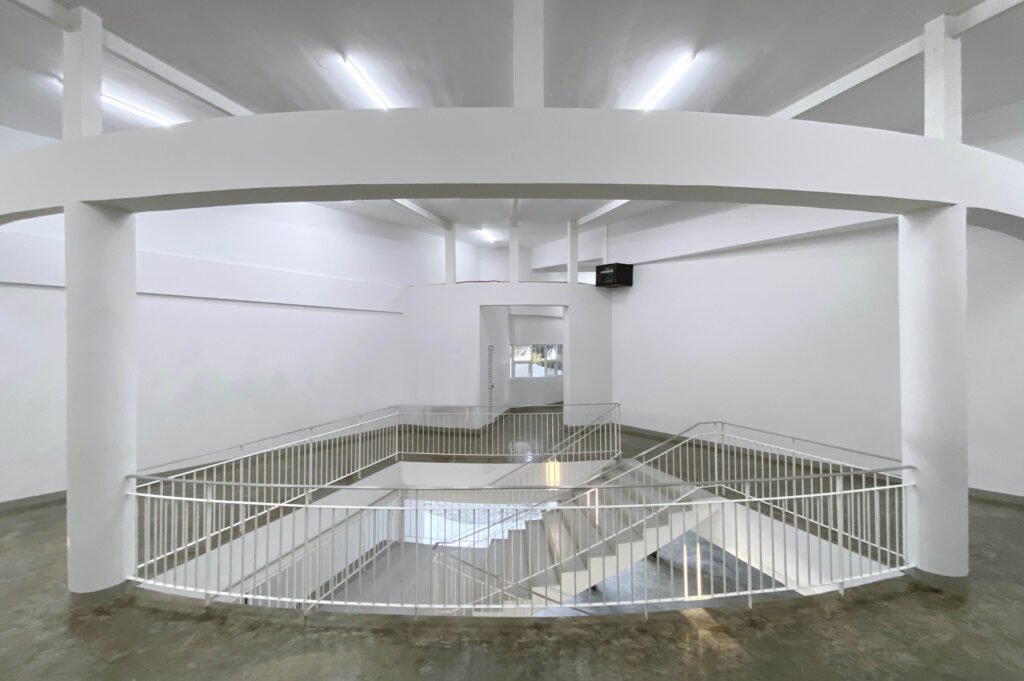

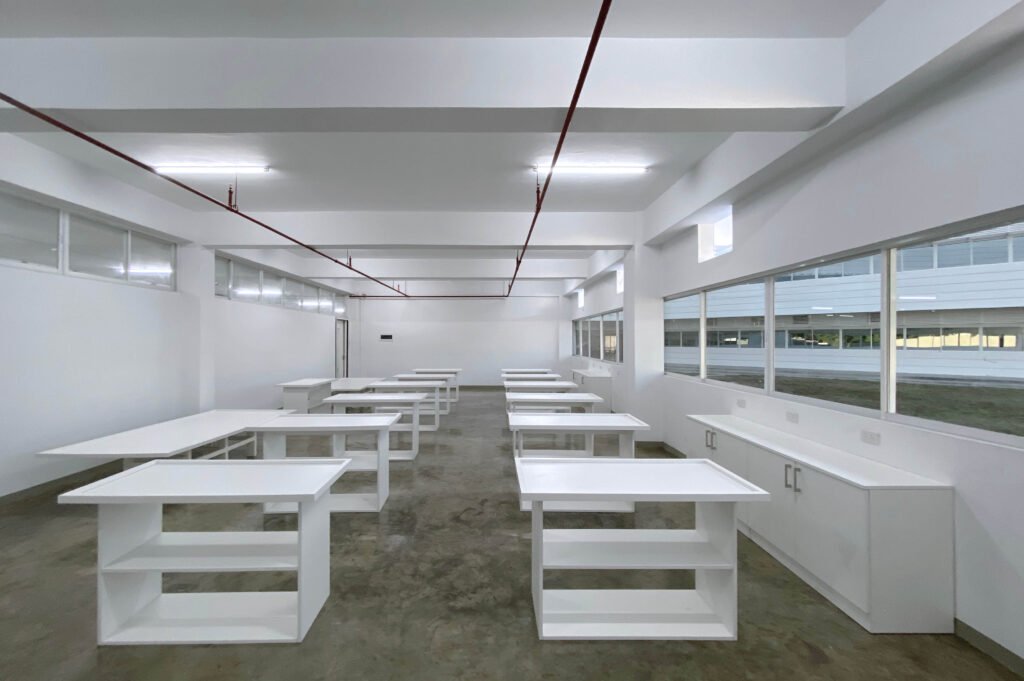
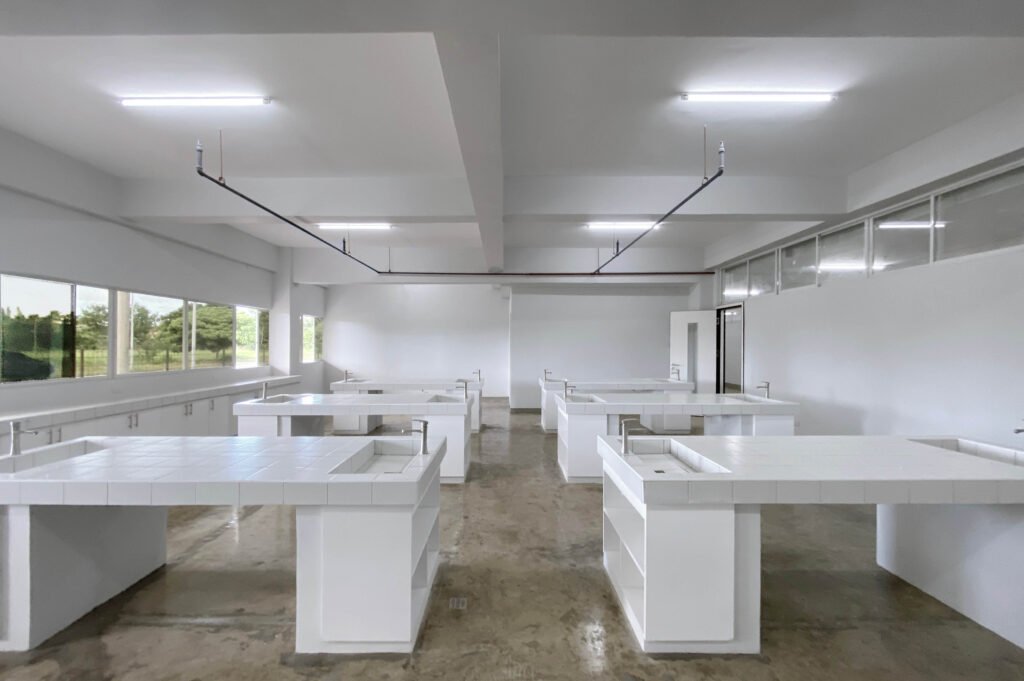
What challenges did Archetype Architecture encounter during the design process, and how were they addressed? How close to your design vision was the resulting structure?
Lim: Managing the design of a building while considering real-world constraints such as time, budget, and technology can be a challenge. One must balance the desire for a building to be more ambitious with the resources available. However, embracing limitations can lead to unique solutions and character. I believe the outcome closely aligns with the original design vision, as the challenges were incorporated into the building’s essence.
Has the facility opened to its users? Have you had the chance to talk to them with regard to their user experience within the facility? What’s the most memorable feedback you’ve received about the school?
Lim: As of early 2024, the West Wing, which was recently completed, has started to be used by grade school students, but only partially. This means that we are only just beginning to see how users react to the space we designed. However, the best feedback we’ve received so far has been that it is futuristic. While we accept this adjective, our goal was to demonstrate that there is a place for striking architecture in a third-world country, even without a budget for parametricism, when thoughtfulness is applied.
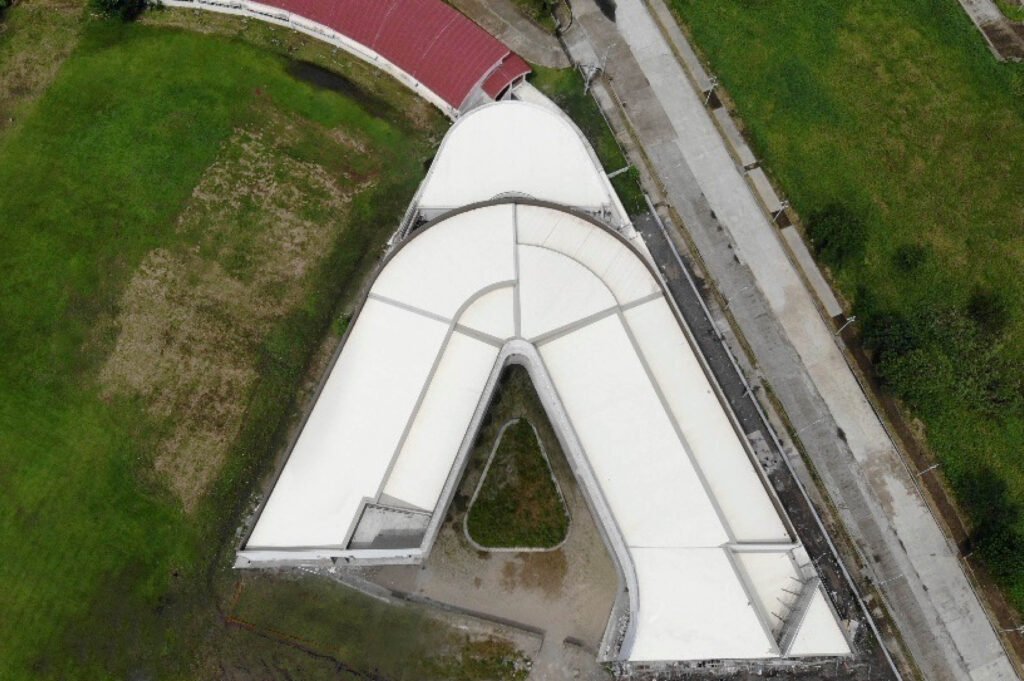

Let’s end by revisiting your studio’s ethos to create ‘architecture with meaning.’ How would you define and describe your work for St. John’s Institute? How does the work contribute and relate to the larger body of work of Archetype Architecture?
Lim: The St. John’s Institute North Point Campus project is a remarkable achievement for our young practice, as it aligns perfectly with our design philosophy. We strive to create cultural and artistic works that positively impact society. This project allows us to apply our architectural approach, emphasizing rich and meaningful designs that integrate and enhance their surroundings. It is a privilege to work on a project that holds great value for the growth and development of its community. •
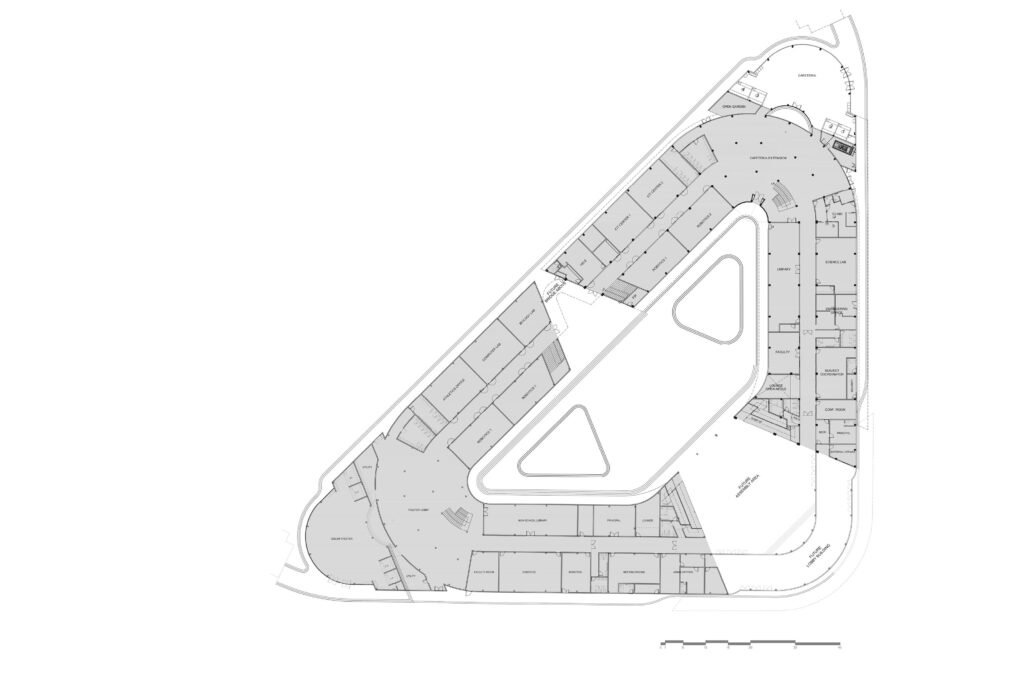
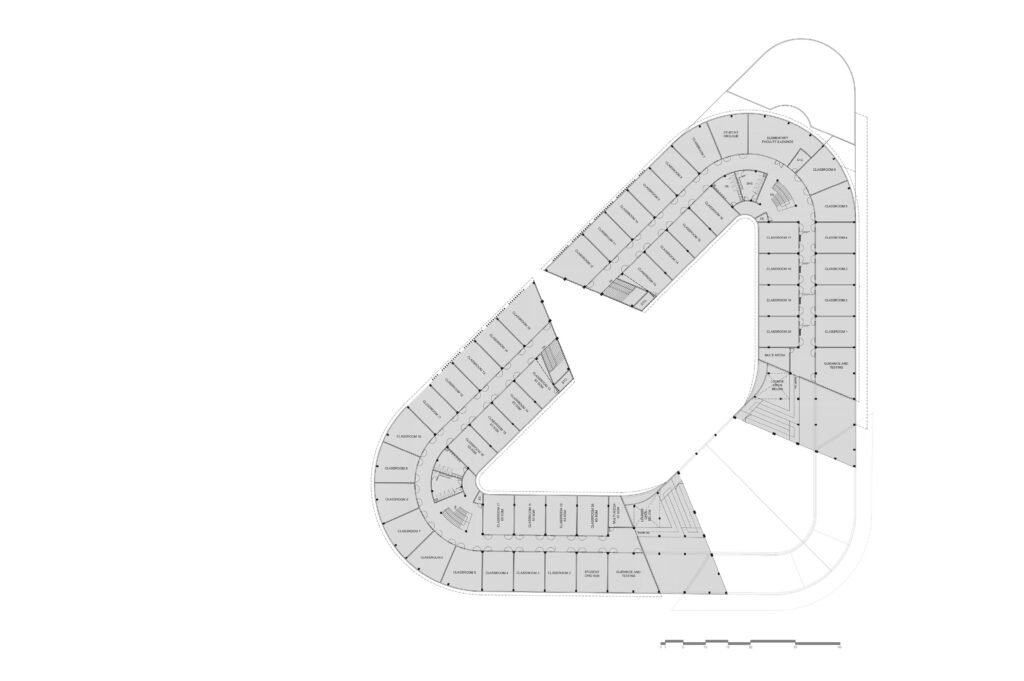
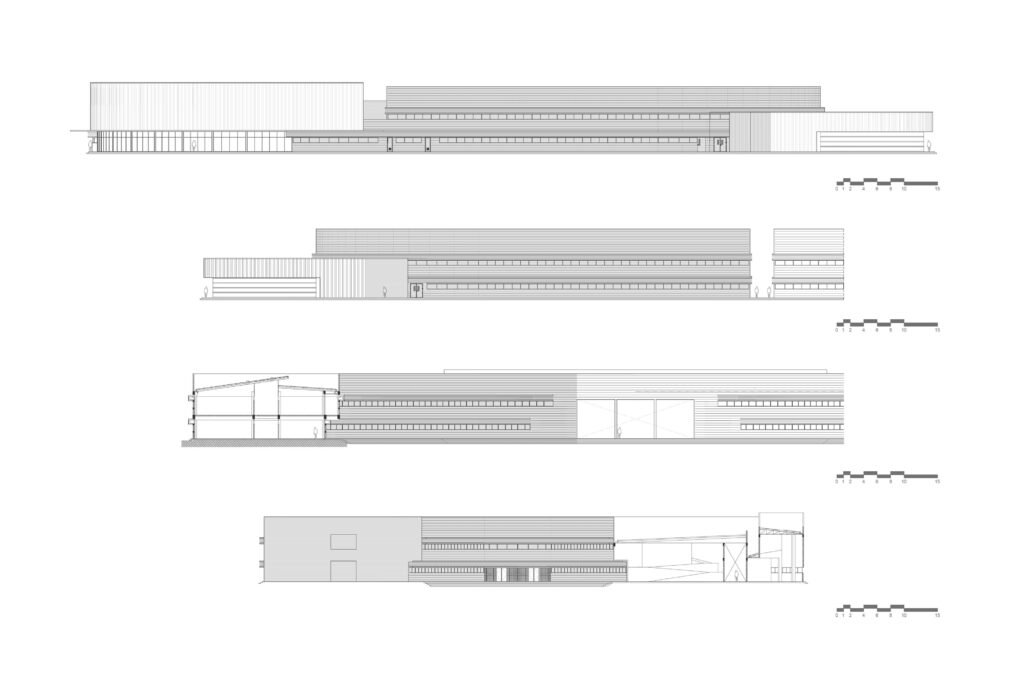

Project Information
Architect: Adriel Denzel Lim, Archetype Architecture
General contractor: Palace Construction Inc.
Structural consultant: Engr: Alexander T. Lim
Exterior wall cladding: Philmetal Products, Inc.
Glass windows: MSK Glass Builders, Accu Glass Builders, Inc., Windoor Glass Works
Exterior and interior lighting: Firefly
Modular cabinets: VRD Kitchen Furnishing Center
Aluminum panel doors: DJMI Doors Manufacturing Co., Ltd.
Paints: Davies Paint

